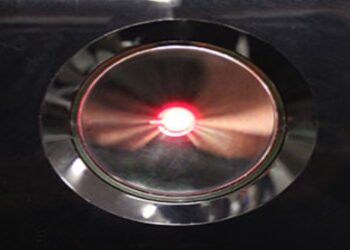Why Do I Hear My Own Voice in My Headset? Let’s Get to the Bottom of This (Before You Toss It Out the Window)
You put on your headphones. You’re ready for a game or a chat. But, you hear… yourself. Hearing your own voice through your headset can be annoying. It can drive you mad. Before tossing your headset, let’s explore the reasons and how to fix it.
1. Tech Gremlins: Technical Issues & Solutions
Sometimes, the simplest issues are the most annoying. They often involve changing settings. Let’s start troubleshooting the technical side.
1.1 Sidetone/Microphone Monitoring: Your Built-in Eavesdropping Feature
Definition: Sidetone is when you hear what your microphone picks up. It’s like your headset tells you it’s working.
Purpose: Surprisingly, sidetone is helpful. It allows you to hear your voice, preventing you from shouting. It helps you control your volume when speaking.
Adjustability: The sidetone is usually adjustable. You can often change its volume or turn it off, depending on your headset and device.
How to Disable: Sidetone settings can be found in your operating system’s sound control panel or your headset’s software. Look for terms like “microphone monitoring” or “sidetone.” Dig into audio settings; solutions are often hidden there.
1.2 Echo (Audio Feedback): The Unwanted Encore
Definition: Audio feedback is when sound from your headphones goes to your microphone. It creates an echo loop, making you feel like you are in a hall of mirrors.
Causes: Echoes can have various causes:
- Software Issues: Glitches or delays in audio can create feedback loops. Your computer may trip over its own feet.
- Hardware Issues: Faulty audio hardware or poorly shielded cables can also cause echo.
Solutions: Time to investigate:
- Reduce Volume: Lowering the volume can stop the feedback loop. Start with this simple solution.
- Check Microphone Placement: Move your microphone away from your speakers. Physical distance can help a lot.
- Software Settings: Communication apps often have echo cancellation features. Ensure they are enabled in the audio settings.
- Update Drivers: Outdated audio drivers can create issues. Update them for a better experience.
- Try Different Ports: If you’re on a desktop, plug your headset into different audio ports. Test it on other devices too.
1.3 Microphone Sensitivity: Taming the Overly Eager Mic
High sensitivity means your microphone picks up everything. It hears your voice and even sounds from beyond your walls. This could be problematic.
How to Adjust: Most systems allow you to change microphone sensitivity. Reduce it until it only captures your voice clearly.
1.4 Headset Connection: Is It Really Plugged In? (Seriously, Check Again)
This seems obvious, but loose connections may cause issues. A dodgy connection can trigger feedback. Ensure your headset is firmly plugged in. Give it a little wiggle to check.
1.5 Static/Background Noise: Battling the Hums and Buzzes
Caused by: Wireless interference often leads to static and background noise. Wi-Fi routers and microwaves may play a part.
Solutions: Improve your audio experience:
- Avoid Interference: Move away from sources of wireless interference. Adjusting your setup can make things better.
- Use Different Ports: Sometimes different ports behave differently. If using adapters, consider switching them out.
1.6 Sound Leakage: Keeping Your Audio to Yourself
Sound leakage isn’t about hearing your voice directly. If your headset doesn’t seal well, sounds from the headphones can reach the microphone.
Solutions: Time to minimize leakage:
- Ensure a Fit: Your headset should fit snugly around your ears. Adjust those ear cups for better sealing.
- Use Foam Earpads: Foam earpads typically provide more sound isolation than leatherette or velour options.
- Lower Volume: Keep volume at a reasonable level to minimize leakage. Your ears will thank you.
- No Noise-Cancelling Headphones: Noise-cancelling headphones can reduce sound leakage and unwanted noise.
2. App-Specific Shenanigans: In-Game/Application Settings
Sometimes, the issue may be app-specific instead of headset-related. Each platform has its own quirks.
2.1 Fortnite: Building and…Echoing?
Fortnite has specific voice chat settings. Check audio options for voice chat volume and microphone controls. Make sure they are configured correctly.
2.2 VoIP Software (Skype, Zoom): Conference Call Conundrums
Skype, Zoom, and other VoIP software have their own echo cancellation and microphone settings. Adjust them in the app for the best results.
2.3 Console Settings (PS5): PlayStation Audio Playground
Your PS5 has system-wide audio settings that affect headset behavior. Explore sound settings to adjust microphone levels and other audio options.
2.4 Discord (PS5): Chatting and…Hearing Yourself on PlayStation?
Discord has its own controls on PS5. Check audio settings for microphone input levels and related feedback settings.
3. The Inner Ear Enigma: Biological/Physiological Reasons (Hearing Your Own Voice…Internally)
Sometimes, hearing your own voice isn’t an external problem but an internal one. Consider how our brains work.
3.1 Internal Monologue (Inner Speech): The Voice Inside Your Head (Literally)
Natural Phenomenon: The voice in your head when you think or read is your internal monologue. It’s normal and a key part of human cognition.
Brain
at Work: Engaging in inner speech activates language processing areas in your brain. It feels like speaking out loud. Your brain rehearses thoughts and conversations.
Subvocalization: Inner speech may involve subvocalization. This includes subtle muscle movements in your vocal cords. Your body mimics speech even in silence.
You don’t hear this internal voice through your headset. However, awareness of your inner monologue can enhance your attunement to your voice when focused.
3.2 Autophony: When Your Inner Voice Gets Amplified (Unintentionally)
Definition: Autophony is the unusual perception of your voice or bodily sounds being loud in your head. Your internal microphone seems too loud.
Causes: Autophony often relates to Eustachian tube or middle ear issues:
- Eustachian Tube Dysfunction: This tube regulates middle ear pressure. Blockages, perhaps from a cold, may cause autophony.
- Middle Ear Infections: Infections here disrupt sound conduction, leading to autophony.
- Earwax Buildup: Excess earwax can push on the eardrum and affect sound perception, including your voice.
- Patulous Eustachian Tube: Rarely, this tube stays open, causing autophony and fullness in the ear.
If autophony persists or is accompanied by ear symptoms, consult a doctor or audiologist. They can diagnose the cause and suggest treatment.
3.3 Hearing Your Own Blinking: The Stealthy Sounds of Your Eyelids
Sometimes, you can hear yourself blink. Eyelid movement creates soft sounds. In a quiet environment, especially with headphones, you might notice it. It’s usually a soft rustling or whooshing. It’s strange but normal. Your body surprises you.
4. When Things Get…Weirder: Medical Conditions & Hallucinations
Hearing distorted voices, including your own, can relate to medical or psychological conditions. These cases are rare. They are less likely than merely hearing your voice through headphones.
4.1 Auditory Hallucinations: Voices from…Where Exactly?
Definition: Auditory hallucinations are perceptions of sounds or voices that aren’t present in the environment. It’s hearing something that’s not really there.
Mental Health Conditions: These hallucinations mostly link with mental health conditions, like schizophrenia. They can also arise in other scenarios.
Other Causes: Substance use, severe trauma, extreme stress, and specific neurological conditions can trigger these hallucinations.
If you experience persistent, distressing auditory hallucinations, seek medical and mental health evaluation.
4.2 Auditory Pareidolia: Finding Voices in the Noise
Definition: Auditory pareidolia involves perceiving patterns or recognizable sounds in random noise. Your brain tries to make sense of auditory chaos.
Misinterpreting Noise: It’s like seeing faces in clouds, but with sounds. Random static can be misinterpreted as speech. It’s a brain trick, not real voices.
While auditory pareidolia isn’t concerning, being aware helps you distinguish between technical issues and brain tendencies to find patterns.
4.3 Tinnitus: The Phantom Ringing (or Buzzing, or Hissing…)
Definition: Tinnitus is the perception of sounds like ringing, buzzing, or hissing when no external sound exists. It’s phantom sound from the auditory system.
Temporary or Chronic: Tinnitus can be temporary after exposure to loud sounds or chronic. Intensity and pitch vary.
Various Causes: Causes include hearing loss, ear infections, noise exposure, and medications.
Tinnitus usually isn’t about hearing your *own* voice, but it’s another internal auditory perception noticeable with headphones. Consult an audiologist if persistent.
4.4 Hyperacusis: Noise Sensitivity Gone Overdrive
Definition: Hyperacusis means increased sensitivity to everyday sounds, making them painfully loud. Volume control is stuck on “ear-splitting.”
Causes: It can arise from noise damage, prolonged loud headphone use, medical conditions, or have unknown causes.
Hyperacusis doesn’t directly cause you to hear your voice, but heightened sensitivity makes you aware of sidetone and feedback from your headset.
4.5 Hypnagogic Hallucinations: Dreaming Before You’re Asleep
Hypnagogic hallucinations occur as you fall asleep. These can be visual, auditory, or tactile. They’re unlikely related to headset use but worth noting if they happen as you drift off. While generally benign, they may tie to sleep disorders.
5. The Toolkit: General Advice/Troubleshooting Steps
We’ve covered much ground. Here are practical steps to troubleshoot and eliminate your voice in your headset.
- 5.1 Update Audio Drivers: Update outdated drivers. Outdated drivers cause issues. Visit your sound card manufacturer’s website for the latest drivers for your OS.
- 5.2 Check Cable Connections: Ensure connections are secure. Recheck everything. Wiggle connections a bit.
- 5.3 Restart Devices: Use the classic “turn it off and on again.” Restart your computer, console, and headset if applicable. This often resolves issues.
- 5.4 Test in Different Environments: Use your headset on a different device to see if the problem continues. This helps identify if the issue is with the headset or primary device.
- 5.5 Adjust Platform Audio Settings: Explore the audio settings of your OS, games, and apps. Experiment with microphone levels and input/output devices.
- 5.6 Mute Microphones When Not Speaking: When not speaking, mute your microphone. Many headsets have mute buttons for feedback elimination.
- 5.7 Reduce Speaker Volume: Lower headphone volume if using open-back headphones or nearby speakers. Less leakage reduces feedback.
- 5.8 Schedule a Hearing Test: If concerns persist or you suspect issues like autophony or tinnitus, schedule a hearing test with an audiologist. Ruling out medical conditions is wise.
Hearing your voice through your headset can be annoying. Systematic troubleshooting usually helps identify the issue and restore audio clarity. Good luck! May your audio be clear and your voice only heard when you intend it to!










